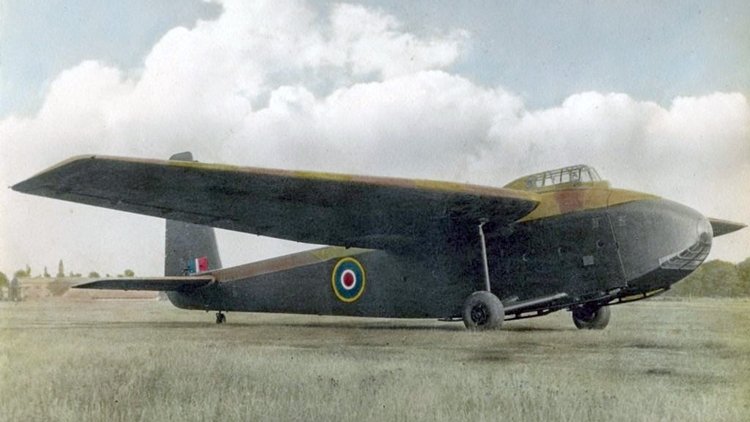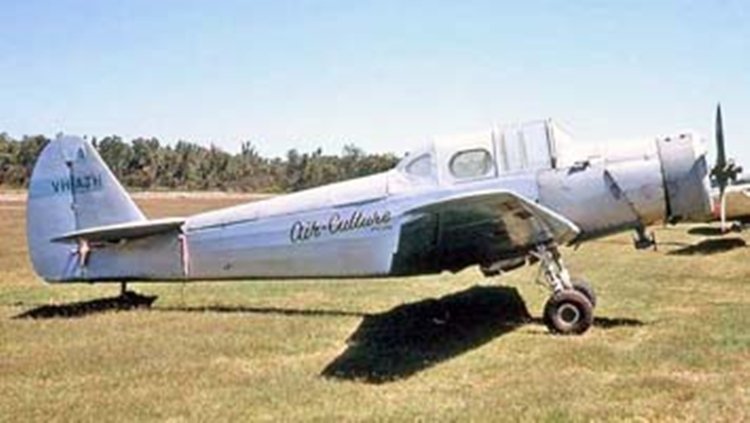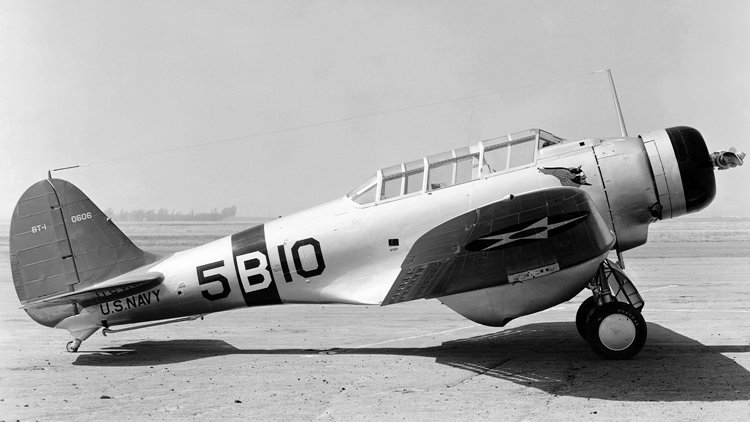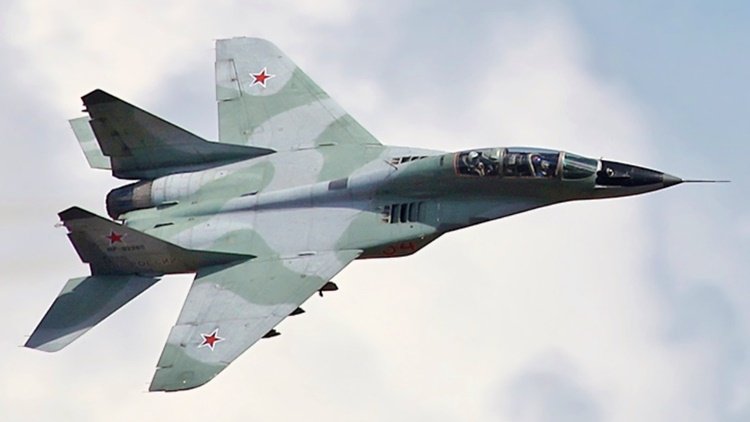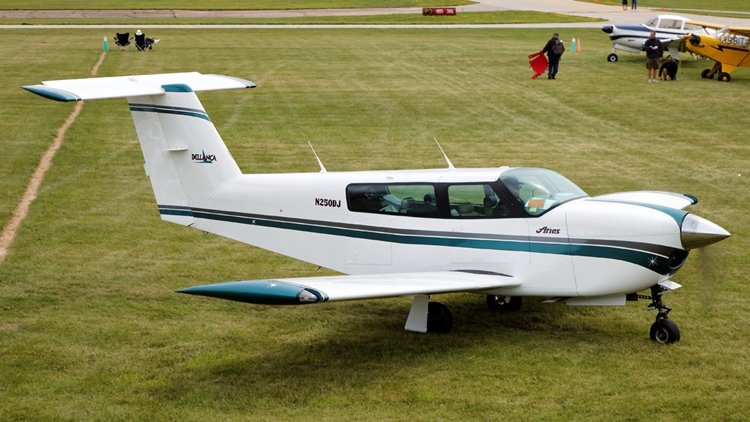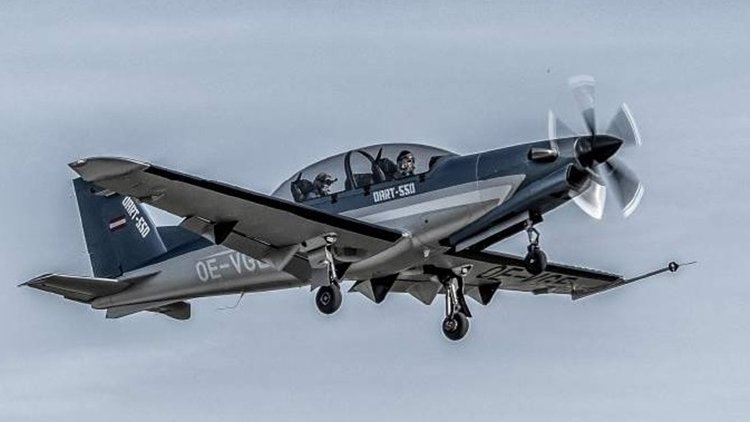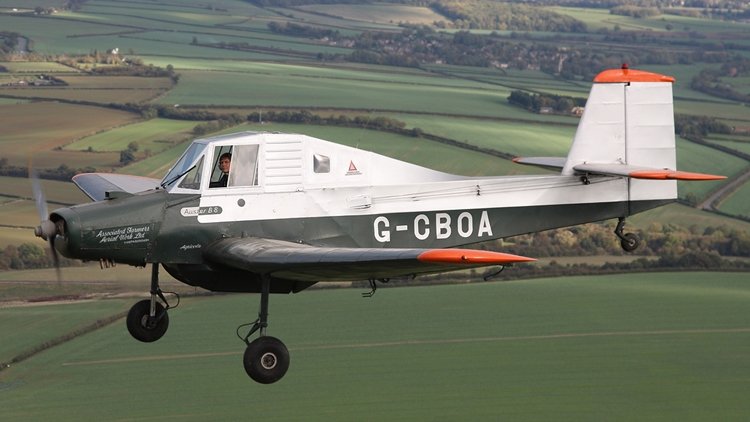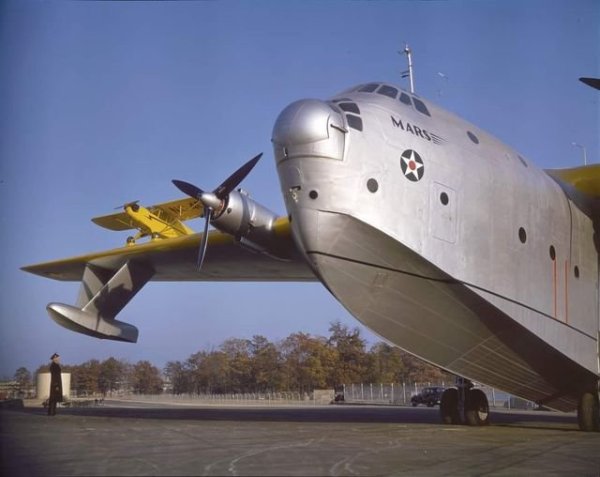-
Posts
7,563 -
Joined
-
Last visited
-
Days Won
67
Content Type
Profiles
Forums
Gallery
Downloads
Blogs
Events
Store
Aircraft
Resources
Tutorials
Articles
Classifieds
Movies
Books
Community Map
Quizzes
Videos Directory
Everything posted by red750
-
The Mitsubishi Ki-21, formal designation "Type 97 Heavy Bomber" (九七式重爆撃機, Kyūnana-shiki jūbakugekiki) was a Japanese heavy bomber during World War II. It began operations during the Second Sino-Japanese War participating in the Nomonhan Incident, and in the first stages of the Pacific War, including the Malayan, Burmese, Dutch East Indies and New Guinea Campaigns. It was also used to attack targets as far-flung as western China, India and northern Australia. The Allies designated it under the reporting names "Sally" /"Gwen". In 1936, the Imperial Japanese Army Air Service issued a requirement for a new heavy bomber to replace both the Ki-20 (Army Type 92 Heavy Bomber) and the Ki-1 (Army Type 93 Heavy Bomber). The design called for a crew of at least four, top speed of 400 km/h (250 mph), endurance of at least five hours, and a bombload of 750 kg (1,650 lb). The design parameters were very ambitious for the mid-1930's; few twin-engine bombers anywhere in the world could exceed such performance at that time. Both Mitsubishi and Nakajima were asked to build two prototypes each, a further proposal from Kawasaki was rejected. The Mitsubishi design was an all-metal mid-wing cantilever monoplane with retractable landing gear, ventral bomb bay and two radial engines. The first prototype flew on 18 December 1936, with the second prototype, which differed in replacing the dorsal turret of the first prototype with a long greenhouse canopy, following later in the month. In the resulting competition, Mitsubishi's Ki-21 and Nakajima's Ki-19 were found to be similar, with the Ki-21 having better performance, while the Nakajima design was a better bombing platform and had more reliable engines. In order to make a final decision, two further prototypes were ordered from both Mitsubishi and Nakajima, with Mitsubishi instructed to change its own 615 kW (825 hp) Mitsubishi Ha-6 radial engines for the Nakajima Ha-5 engines used by the Nakajima design and vice versa, while the Ki-21 gained a revised glazed nose similar to that of the Ki-19 and revised tail surfaces. Thus modified, the Ki-21 proved superior and was ordered into production in November 1937 as the "Army Type 97 Heavy Bomber Model 1A". Production aircraft began to enter service in August 1938, supplementing and then replacing the Fiat BR.20 bombers which had been purchased as an interim measure. Several improved versions followed before the production of the type ended in September 1944. A total of 2,064 aircraft were built, 1,713 by Mitsubishi and 351 by Nakajima. Variants Ki-21 Prototype models with various engines and armament combinations for evaluation. Final version with Nakajima Ha-5 engine. 8 built Ki-21-Ia (Army Type 97 Heavy Bomber, Model IA) First production model, with 634 kW (850 hp) Nakajima Ha-5-kai engines. Most were built by Mitsubishi, 143 manufactured by Nakajima Ki-21-Ib (Army Type 97 Heavy Bomber, Model IB) Improved version with additional 7.7 mm (0.303 in) machine guns, larger bomb compartment and flaps, redesigned tail. 120 built by Mitsubishi, 351 (including Ki-21 Ib and Ic) by Nakajima Ki-21-Ic (Army Type 97 Heavy Bomber, Model IC) Improved type with one additional 7.7 mm (0.303 in) machine gun, increased fuel capacity, 160 built by Mitsubishi Ki-21-II Evaluation model with more powerful engines, 4 built Ki-21-IIa (Army Type 97 Heavy Bomber, Model IIA) Production model based on Ki-21-II, 590 built Ki-21-IIb (Army Type 97 Heavy Bomber, Model IIB) Final production version based on Ki-21-IIa with modified canopy, clear upper cabin replaced by rotating turret, 688 built. MC-20-I (Army Type 100 Transport, Model I) Unarmed civilian transport version, converted from Ki-21-Ia; approximately 100 aircraft were converted.
-
The General Aircraft Limited GAL.49 Hamilcar or Hamilcar Mark I was a large British military glider produced during the Second World War, which was designed to carry heavy cargo, such as the Tetrarch or M22 Locust light tank. When the British airborne establishment was formed in 1940 by the order of Prime Minister Winston Churchill it was decided to develop a large glider which would be able to transport heavy equipment in support of airborne troops. General Aircraft Limited were chosen in January 1941 to develop this glider, which they designated the GAL.49 'Hamilcar'. It was designed to transport a light tank or two Universal Carriers. A number of problems, which included vacillation by the War Office on the number of gliders it wanted and poor management by GAL, led to delays in the production of the Hamilcar and it was not until mid-1943 that the first production glider was assembled. These problems were only partially solved and production of the glider continued to be slow, hampered by difficulties in finding suitable locations to store and construct them once their parts were produced. A total of 344 Hamilcars had been built when production ended in 1946. Hamilcars were used on three occasions,and only in support of British airborne forces. They first saw action in June 1944, when approximately thirty were used to carry Ordnance QF 17 pounder anti-tank guns, transport vehicles and Tetrarch light tanks into Normandy in support of British airborne forces during Operation Tonga. In September 1944 a similar number of Hamilcars were used to transport anti-tank guns, transport vehicles and supplies for airborne troops as part of Operation Market Garden. They were used a third and final time in March 1945 during Operation Varsity when they transported M22 Locust light tanks and other supplies. The gliders proved to be successful in all three operations, although their slow speed and large size made them easy targets for anti-aircraft fire, which resulted in a number of gliders being damaged or destroyed. A powered variant of the Hamilcar was produced, the Hamilcar Mark X, to extend the range of the Hamilcar so it could serve in the Pacific War; the conflict in the Pacific ended before the design could see combat. The Hamilcar was constructed primarily from wood, mainly birch and spruce, with fabric-covered plywood forming the skin, and high grade steel reinforcement beams in critical areas. It had a wingspan of 110 feet (34 m), a length of 68 feet (21 m) and a height of 20 feet (6.1 m) to the top of the fin with the tail down. It weighed 18,400 pounds (8,300 kg) when empty, and could transport a military load of 17,600 pounds (8,000 kg) to give a total weight of 36,000 pounds (16,000 kg). The whole aircraft was broken down into smaller sections for transport. It was so large and heavy that it required the largest and most powerful aircraft to pull it off the airfield and subsequently tow it; four-engined bombers were used, most frequently the Handley Page Halifax. Both wing and cockpit were set above the fuselage to provide the greatest amount of room for the cargo compartment, and to ensure that they did not interfere with the loading of vehicles; the compartment measured approximately 32 feet 31.5 inches (10.554 m), 7 feet 10.5 inches (2.400 m) inches wide and between 6 feet (1.8 m) and 7 feet 7 inches (2.31 m) inches in height. The nose of the glider was hinged and opened to the side for ease of loading vehicles and cargo, and the crew of two pilots were seated in tandem in a cockpit on the top of the fuselage, which was accessed via an internal ladder and was fifteen feet above ground; they were eventually protected by a bullet-proof windscreen and a plate of armour behind the second pilot. An intercom was also added to provide communication between the pilots and the personnel below them. An initial design feature, which was eventually removed prior to full-scale production, was the installation of an under-fuselage hatch which would allow the prone firing of a Bren light machine gun as the glider approached the landing zone. When the parts for a Hamilcar were completed and the glider was erected, it was flown to RAF North Luffenham in Rutland to have its specific cargo placed on board, and it was then flown to RAF Tarrant Rushton, which had been selected as the Hamilcar training and operational base in November 1943. It was not possible to tow the glider empty, so any empty gliders usually carried Universal Carriers or concrete blocks as ballast. For more information on the development, design, operational history and variants of the Hamilcar, click here.
-

Helicopter crash into Cairns hotel 12/08/2024
red750 replied to red750's topic in Aircraft Incidents and Accidents
How is this likely to affect the ASIC -
The Otto Celera 500L is a business and utility light aircraft developed by American startup, Otto Aviation. By November 2021, 55 successful test flights had been completed, as introduction is targeted for 2024–2025. It has a single RED A03 diesel piston engine in a pusher configuration and can seat six passengers. It is named after the latin word for 'fast,' celer. Otto Aviation Group, LLC was established in 2008 by Bill Otto to develop the Celera 500L. William Otto has been a research scientist at Los Alamos Scientific Labs, systems engineer then chief scientist at North American Aviation. Otto Aviation is privately funded since 2008 and is seeking a Series B fundraising round: 200 million dollars are needed for FAR Part 23 certification in three years. Construction of the airplane commenced in 2015. The aerodynamic prototype made its maiden flight in January 2018, and began performance testing in September 2019. Otto publicly announced the aircraft and its development program in August 2020, and noted that 31 test flights had been flown to date.[6] By then, a weight-optimized conforming prototype with cabin windows and longer landing gear was expected to fly within 18 months. FAA certification and deliveries are targeted for 2023–2025. By March 2021, the prototype had achieved over 35 hours of flight tests, interrupted by the pandemic until Q3 2021, before two additional flying prototypes join the program. By October 2021, the company had raised more than $50 million. The prototype should reach a fuel economy of 30 mpg‑US (7.8 L/100 km) in cruise, to be improved with integrated heat exchangers replacing radiators nacelles. A second turbo-compressor should allow reaching a 38,000 ft (12,000 m) altitude, and a third for 50,000 ft (15,000 m). In 2022, Otto announced a partnership with ZeroAvia to build a hydrogen-powered version of its aircraft. Introduction planned 2024-2025.
-
The Scaled Composites Model 81 Catbird is a high-efficiency five-seat single-engine all-composite general aviation aircraft designed by Burt Rutan. It is unusual in that it incorporates both a small forward wing and a small conventional horizontal stabilizer on the tail. The Catbird was designed by Burt Rutan while his company, Scaled Composites, was owned by Beechcraft. The design was intended to replace the long-produced Bonanza. The financial situation of Beech at the time, and competing projects, prevented consideration of commercial production. In 1988 Beechcraft sold Scaled Composites to the partnership of Rutan and the Wyman-Gordon Company, who also acquired the rights to a number of the designs, including Model 81 Catbird. The aircraft was stored inverted from the ceiling of Scaled Composites' Mojave hangar until April 2011. The aircraft was restored to flying condition by Zach Reeder, Jim Reed and Mike Melvill. Catbird's second first flight was July 7, 2011. Catbird holds the world record for speed over a closed circuit of 5,000 km without payload of 334.44 km/h, set in 2014 in Category C-1c, Landplanes with take-off weights from 1000 to 1750 kg. The aircraft won the CAFE Foundation's 1988 California CAFE 400 race flown by Mike Melvill, in which aircraft compete for performance efficiency, as measured by fuel consumption, speed and payload. Piloted by Dick Rutan, it subsequently won the 1993 CAFE Challenge with a record score and a speed of 210.73 mph (339.14 km/h), fuel consumption of 20.15 mpg (US miles and gallons) and a payload of 976.63 pounds (442.99 kg). In 2014, the Catbird set another record, for speed over a closed 2,000 km course, from Mojave to EAA AirVenture Oshkosh, with an average speed of 339.50 km/h (211 mph).
-

Helicopter crash into Cairns hotel 12/08/2024
red750 replied to red750's topic in Aircraft Incidents and Accidents
More details of the timeline. Cairns helicopter crash: The major unanswered questions about the helicopter tragedy - as astonishing timeline reveals how incident unfolded | Daily Mail Online WWW.DAILYMAIL.CO.UK New Zealander Blake Wilson was the pilot on board a Robinson 44 helicopter which smashed into the roof the DoubleTree by Hilton in Cairns -

Helicopter crash into Cairns hotel 12/08/2024
red750 replied to red750's topic in Aircraft Incidents and Accidents
Cairns helicopter crash: Blake Wilson identified as pilot behind the flight that crashed | Daily Mail Online WWW.DAILYMAIL.CO.UK The helicopter pilot who crashed a stolen aircraft into a waterfront hotel in Cairns was a young Kiwi who had only recently moved to Australia to begin a 'new adventure'. -
Cessna 407 The late 1950s and early ’60s saw a frenzy of aircraft development. Largely driven by military contracts that called for a specialized type dedicated to each role, variety abounded, and unique designs emerged to address the many military requirements of the era. Cessna was no exception, and it took an interesting approach to developing a new model in September 1959. Historically, Cessna would modify civilian types for military use. For example, the 310 became the U-3, the 185 became the U-17, and the 172 became the T-41. In the case of the 407, the company reversed the process, using the existing T-37 “Tweet” primary jet trainer as a starting point and modifying it for civilian use. By installing new engines and modifying the cabin section, it aimed to convert the two-place military trainer into a comfortable, four-place personal jet. There was some precedent for this new category of aircraft. Just seven months prior, French manufacturer Morane-Saulnier introduced the MS.760 Paris, a four-place jet with similar dimensions. With both military contracts and civilian sales secured, Morane-Saulnier appeared to have found multiple markets and would ultimately go on to build more than 200 examples. Never one to happily cede market share, Cessna observed that it could pursue the blossoming personal jet market and also possibly secure some additional military contracts with minimum investment. By utilizing many of the same components and tooling as the T-37, much of the necessary development work could be avoided. Building a full-scale wooden mock-up and beginning construction of the first prototype, the marketing group began a sales tour, pitching the concept at various locations around the U.S. Outwardly similar to the T-37, the 407 utilized the same tail section and wing as the jet trainer but repositioned the engine nacelles 9 inches outward to create more internal space. The cabin utilized this additional space to accommodate four passengers and their baggage. Occupants could easily step into the low-slung cabin without the need for separate steps or ladders, a welcome change from the MS.760, which required occupants to climb a stepladder and clamber into the cockpit from above—decidedly unsophisticated for the target customers of luxurious private jets. Ultimately, like some other intriguing concepts from Cessna, the 407 was not to be. The mock-up pictured was, in fact, a T-37 with a wooden cabin section. And while construction of actual cabin sections was underway, the entire 407 project was abandoned in favor of the massively successful Citation family, the first of which flew in 1969. Interestingly, the FAA registry shows that Cessna registered a 407 as N34267, with serial number 627, indicating the project was full steam ahead, right up until the end.
-

Helicopter crash into Cairns hotel 12/08/2024
red750 replied to red750's topic in Aircraft Incidents and Accidents
As he was, or had been an employee of Nautilas Aviation ground crew, one would assume he did. -
The company that owns the helicopter that crashed into a Cairns hotel early on Monday killing the pilot, the only occupant, and sparking the evacuation of 400 guests, says the flight was "unauthorised" and the chopper was taken from a hangar at Cairns Airport. The helicopter, a Robinson R44, was stolen by a member of the ground crew at Nautilas Aviation after having farewell drinks with a colleague before leaving for a promotion to a position in Torres Strait. He did not hold an Australian helicopter licence, but had held a New Zealand commercial helicopter licence.
-
The KS-3 agricultural aircraft was the forerunner of the Yeoman Cropmaster, and was built at Bankstown, NSW, by Kingsford Smith Aviation Services (KSAS) in the 1950s. KSAS was well versed with the Wackett, having been involved in overhauling some 50 ex-RAAF Wacketts for the Netherlands East Indies Air Force (NEIAF) in 1946. In 1957 KSAS modified a Wackett VH-AJB (c/n 274) to improve performance. In February 1957 further modifications were made and, following tests, another Wackett VH-AJH (c/n 283) was converted for agricultural use by the installation of a hopper in the front cockpit. First flight was made on 26 March 1957, and this aircraft, known as the KS-1, could carry a 295 kg (650 lb) payload. In August 1957 further modifications were made, including a new hopper and louvre box, and the KS-1 became known as the KS-2. The Chief Pilot of Airwork Pty Ltd of Perth, WA flew the aircraft and asked that the hopper be placed behind the pilot to improve visibility and for ease of loading, and a Wackett (c/n 363) was so converted. Following initial use of the aircraft for a period as noted, this Company recommended changes to the conversion to make it more suitable in its design role. The result was the KS-3, which had a completely re-designed fuselage and a modified wing. The hopper was placed in a hole cut out of the centre-section of the wooden wing, and the control system was re-designed to bypass the hopper, which was installed in what was previously the rear cockpit, which had a capacity of 13 m³/364 litres (459 sq ft/80 Imp gals) and was built of aluminium. Another Wackett VH-FBD¹ (c/n 299) was converted but this aircraft, along with the prototype PL-7 Tanker, was destroyed in a hangar fire at Bankstown on 17 January 1958. KSAS then reserved registrations VH-FBD to VH-FBM for the first production batch of ten aircraft. Another KS-3 VH-FBE (c/n 365) was completed and flown on 24 December 1957. A fourth Wackett (c/n 410) was converted, being test flown and registered on 27 June 1958, becoming VH-FBD². Surplus equipment was removed and, despite the installation of the 123 kw (165 hp) Warner Super Scarab engine, which was considered a little under-powered for this role, the aircraft was found to have a reasonable performance. First customer delivery was VH-FBF (c/n 375) to Airwork in Western Australia, this aircraft having been slightly damaged in the hangar fire referred to but, being repaired, flying for the first time on 21 February 1958. Later the KS-2 VH-AJH (c/n 283) was overhauled, brought up to KS-3 specifications, and bought by Airwork. All KS-3 Cropmasters were operated by Air Culture Pty Ltd, having been obtained from Airwork, in association with Yeoman Aviation Pty Ltd of Claremont, WA, the aircraft being operated under the Yeoman Aviation airwork licence. In 1958 KSAS put to the Department a submission it would build an all-metal wing and tail for all future production aircraft, indicating it had orders for 12 aircraft at that time. It also proposed a tricycle undercarriage and installation of either a 179 kw (240 hp) Continental or a 201 kw (270 hp) Lycoming engine. In this regard Yeoman Aircraft was set up to build the new aircraft, and Yeoman later went on to develop and build the YA-1 Cropmaster, Air Culture being the major user. Air Culture operated the KS-3s until May 1961 when legislation forced their retirement because of Departmental policy on plywood box-spar construction of wings. The aircraft were used extensively for dusting and spraying operations, as well as sowing wheat, and were the first aircraft in Australia to be used for this type of operation. KS-3s built were: VH-FBD¹ (c/n 299) registered in December 1957, but destroyed in a hangar fire at Bankstown on 17 January 1958; VH-FBD² (c/n 410) registered on 27 June 1958 and wrecked when it ground looped at Borden, WA on 27 November 1961; VH-FBE (c/n 365) registered from December 1957 to May 1961; VH-FBF (c/n 375) registered from March 1958 to April 1961 when it crashed at Northampton, WA; and VH-AJH (c/n 283) which, after retirement from agricultural operations, was flown in the private category from May 1963 to April 1964. After having had its hopper removed and side windows fitted, it was stored for some years until placed on display at the Royal Australian Air Force (RAAF) Association Heritage Museum at Bull Creek in Perth, WA in 1976. In 2008 VH-AJH (ex A3-49) was obtained, and placed on display, by the Queensland Air Museum at Caloundra.
-
The Northrop BT was an American two-seat, single-engine monoplane dive bomber built by the Northrop Corporation for the United States Navy. At the time, Northrop was a subsidiary of the Douglas Aircraft Company. While unsuccessful in its own right, the BT was subsequently redesigned into the Douglas SBD Dauntless, which would form the backbone of the Navy's dive bomber force. The design of the initial version began in 1935. It was powered by a 700 hp (520 kW; 710 PS) Pratt and Whitney XR-1535-66 double row air-cooled radial engine and had hydraulically actuated perforated split flaps (dive brakes), and main landing gear that retracted backwards into fairing "trousers" beneath the wings. The perforated flaps were invented to eliminate tail buffeting during diving maneuvers. The next iteration of the BT, the XBT-1, was equipped with a 750 hp (560 kW; 760 PS) R-1535. This aircraft was followed in 1936 by the BT-1, powered by an 825 hp (615 kW; 836 PS) R-1535-94 engine. One BT-1 was modified with a fixed tricycle landing gear and was the first such aircraft to land on an aircraft carrier. The final variant, the XBT-2, was a BT-1 modified to incorporate landing gear which folded laterally into recessed wheel wells, leading edge slots, a redesigned canopy, and was powered by an 800 hp (600 kW; 810 PS) Wright XR-1820-32 radial. The XBT-2 first flew on 25 April 1938, and after successful testing the Navy placed an order for 144 aircraft. In 1939 the aircraft designation was changed to the Douglas SBD-1 with the last 87 on order completed as SBD-2s. By this point, Northrop had become the El Segundo division of Douglas aircraft, hence the change. The U.S. Navy placed an order for 54 BT-1s in 1936 with the aircraft entering service during 1938. BT-1s served on USS Yorktown and Enterprise. The type was not a success in service due to poor handling characteristics, especially at low speeds, "a fatal flaw in a carrier based aircraft." It was also prone to unexpected rolls and a number of aircraft were lost in crashes. Variants XBT-1 Prototype, one built. BT-1 (Specifications below) Production variant, 54 built. BT-1S A BT-1 (c/n346, BuNo 0643) was fitted with a fixed tri-cycle undercarriage. This aircraft was damaged in a crash on 6 February 1939, returned to Douglas and repaired to BT-1 standard. Comparison between the XBT-1 (BuNo 9745) and XBT-2 (BuNo 0627) on 4 December 1936 XBT-2 One BT-1 modified with fully retractable landing gear and other modifications. BT-2 Production variant of the XBT-2, 144 on order completed as SBD-1 and SBD-2. Douglas DB-19 One BT-1 (c/n346, BuNo 0643), the former BT-1S, was modified as the DB-19 which was tested by the Imperial Japanese Navy as the Douglas DXD1 (long designation - Douglas Navy Experimental Type D Attack Aircraft)
-
The Cierva W.11 Air Horse was a helicopter developed by the Cierva Autogiro Company in the United Kingdom during the mid-1940s. The largest helicopter in the world at the time of its debut, the Air Horse was unusual for using three rotors mounted on outriggers, and driven by a single engine mounted inside the fuselage. Only two aircraft were built, further development by Cierva was stopped after the crash of the first one and little work was done under Saunders Roe before the project was ended and the second aircraft was scrapped in 1951.
-
The object above the cockpit in the last photo above is a mirror for the pericope used by the instructor in the trainer variant, to see the runway over the head of the trainee in the front cockpit.
-
The Mikoyan MiG-29 (Russian: Микоян МиГ-29; NATO reporting name: Fulcrum) is a twin-engine fighter aircraft designed in the Soviet Union. Developed by the Mikoyan design bureau as an air superiority fighter during the 1970s, the MiG-29, along with the larger Sukhoi Su-27, was developed to counter new U.S. fighters such as the McDonnell Douglas F-15 Eagle and the General Dynamics F-16 Fighting Falcon. The MiG-29 entered service with the Soviet Air Forces in 1983. While originally oriented towards combat against any enemy aircraft, many MiG-29s have been furnished as multirole fighters capable of performing a number of different operations, and are commonly outfitted to use a range of air-to-surface armaments and precision munitions. The MiG-29 has been manufactured in several major variants, including the multirole Mikoyan MiG-29M and the navalised Mikoyan MiG-29K; the most advanced member of the family to date is the Mikoyan MiG-35. Later models frequently feature improved engines, glass cockpits with HOTAS-compatible flight controls, modern radar and infrared search and track (IRST) sensors, and considerably increased fuel capacity; some aircraft have also been equipped for aerial refueling. Following the dissolution of the Soviet Union, the militaries of multiple ex-Soviet republics have continued to operate the MiG-29, the largest of them being the Russian Aerospace Forces. The Russian Aerospace Forces wanted to upgrade its existing fleet to the modernised MiG-29SMT configuration, but financial difficulties have limited deliveries. The MiG-29 has also been a popular export aircraft; more than 30 nations either operate or have operated the aircraft. As of 2024 Flight Global estimates that 809 MiG-29s, of all types, are in service with air forces, making it the 5th most common active fighter. Sharing its origins in the original PFI requirements issued by TsAGI, the MiG-29 has broad aerodynamic similarities to the Sukhoi Su-27, but with some notable differences. The MiG-29 has a mid-mounted swept wing with blended leading-edge root extensions (LERXs) swept at around 40°; there are swept tailplanes and two vertical fins, mounted on booms outboard of the engines. Automatic slats are mounted on the leading edges of the wings; they are four-segment on early models and five-segment on some later variants. On the trailing edge, there are maneuvering flaps and wingtip ailerons. The MiG-29 has hydraulic controls and a SAU-451 three-axis autopilot but, unlike the Su-27, no fly-by-wire control system. Nonetheless, it is very agile, with excellent instantaneous and sustained turn performance, high-alpha capability, and a general resistance to spins. The airframe consists primarily of aluminum with some composite materials, and is stressed for up to 9 g (88 m/s²) maneuvers. The controls have "soft" limiters to prevent the pilot from exceeding g and alpha limits, but the limiters can be disabled manually. For much more detail on development, design, operational history and variants, click here.
-
The Bellanca T-250 Aries was a light airplane built in the United States in the early 1970s, which achieved only limited production. Designed by Marvin Greenwood in Texas while his company, Anderson-Greenwood, owned the Bellanca name, it was offered as a Bellanca product. It was a conventional low-wing monoplane with retractable tricycle undercarriage and a high T-tail. Federal Aviation Administration type certification was obtained on 28 July 1976. Number built 5
-
Pitcairn PA-36 Developed in 1938, the PA-36 has an all metal fuselage and rear engine. The front wheels are steerable. Tabular details here,
-
The RUMAS 10 is a strikingly designed light helicopter by the Czech-based RUMAS (Russian Ukraine Maslova) group. The helicopter uses a three-bladed coaxial counter-rotating main rotor system along with a pusher-type tail rotor reminiscent of the Sikorsky S-97 Raider. The 10 is intended primarily for civil use and takes the unmanned future of aviation into account with its design. Unlike most helicopter the 10 has a main rotor that is not tilted during flight, since propulsion is provided by the rear pusher-type propeller. This is a feature that significantly decreases drag. The rear propeller is a high-speed fully reversible unit that can quickly change its thrust vector to accelerate or brake the aircraft. The combination of these different design features results in a helicopter with a guaranteed cruise speed of 155 mph (250 kph) and a designed top speed of 186 mph (300 kph). This is a 75% improvement on the cruising speed of traditional light helicopters. A higher flight speed translates to lower per-hour flight costs, coupled with an asking price estimated at 850 000 USD the 10 becomes a very attractive prospect, as it is in the same price range as a Bell 206 Jet Ranger. An aircraft that tops out at 137 mph (222 kph). Another interesting aspect of the 10 is the choice of power plant. One may have either a single gas turbine engine rated at 220 horsepower or two rotary piston engines for a similar combined rating. The relatively low absolute engine power makes the performance, and therefore aerodynamics, of the 10 all the more remarkable. In terms of design the 10 certainly looks like a 21s century aircraft, with an aesthetic that is more reminiscent of Apple computers than Eastern European design bureaus such as Mil. This is clearly a result of RUMAS’ experience with modern composite materials. In fact, apart from engines and avionics, RUMAS manufactures everything in-house. The cockpit size and design also clearly have comfort in mind, which is another departure from historic vehicle design from this part of the world. Where typical light helicopters assume a pilot weight of about 175 lb (80 kg) the 10 works on an assumption of 265 lb (120 kg). It will also accommodate pilots slightly taller than 6ft (about 190 cm). The Russian and Chinese markets are likely to be the main recipients of 10s when they become available. The Russian market alone has an estimated demand of 30 units per year according to RUMAS. If the helicopter performs as promised at its proposed price it has a good chance at market success.
-
Surprising number of VH- aircraft in that video.
-
The Diamond DART is a series of tandem, two-seat civilian and military turboprop trainers manufactured by Austrian Diamond Aircraft, "DART" meaning Diamond Aircraft Reconnaissance Trainer. The DART-450 made its first flight on 17 May 2016. Certification of the $3.1 million plane was expected by the end of 2017. The first two deliveries were to be for a non-certificated kit version in 2017, while a certificated aircraft was expected to be delivered in September 2018. Diamond intends to deliver 50 aircraft per year. The third prototype was expected to fly in late 2017, powered by a 550hp (410kW) GE Aviation engine. The DART-450 is built predominately from carbon fibre. It is powered by a 495 hp (369 kW) Ivchenko-Progress Motor Sich AI-450S turboprop engine, driving a five-bladed MT Propeller. The cockpit accommodates two crew on ejection seats. The avionics are provided by Garmin and the fuselage is able to mount an optional retractable surveillance camera, plus other equipment. Variants Diamond DART-450 (Specifications below) First flown on 17 May 2016. It has a 495 hp (369 kW) Ivchenko-Progress Motor Sich AI-450S turboprop, weighs 1,330 kg (2,932 lb) empty and has a 2,300 kg (5,071 lb) max takeoff weight. Diamond DART-550 Version powered by a 550 hp (410 kW) General Electric GE H75-100 turboprop, first flown on 24 May 2018. It has eight hours endurance, Martin-Baker MK16 ejection seats, a Garmin G3000 cockpit, 1,600 kg (3,527 lbs) OEW, 2,400 kg (5,291 lbs) MTOW. Diamond DART-750 Upgrade with the Pratt & Whitney Canada PT6 turboprop engine rated at 750 hp (559 kW). The aircraft had its first flight on 12 June 2023. CETC TA-20 Chinese licensed locally manufactured variant of the DART-450 utilizing alternate Chinese avionics, first flown on 6 November 2018. It is being proposed as a possible candidate for the development of a basic military trainer aircraft for the People's Liberation Army Air Force. Diamond Dart 450 Diamond Dart 550 Diamond Dart 750
-
That's why I usually refer to it as the Daily Fail.
-
The Auster B8 Agricola was a commercially unsuccessful British agricultural aircraft designed for the aerial topdressing market which opened up in New Zealand in the early 1950s. Constructed of fabric over a corrosion-proofed steel frame, the design featured a large high-lift low-set monoplane wing, external control cables, fixed tailwheel undercarriage and a somewhat angular fuselage. It had an aft cabin that could seat two passengers, a hopper over the centre of the wing which could hold 750 kg of superphosphate in the topdressing role, or 654 litres of spray as a crop duster. The pilot sat forward of the hopper over the wing leading edge, a position which gave a good field of view compared with the American practice of placing the pilot behind the hopper, though this view was somewhat restricted by the extensive canopy joinery and bulky rear decking. The Agricola's handling was generally described favourably, particularly its slow speed performance and controls, while its rugged and simple construction allowed for easy maintenance and repair. The aircraft was utilitarian rather than attractive; one website has short-listed the Agricola in a competition for the ugliest aircraft of all time. The type was first flown in 1955. It was out-competed in its target market by the PAC Fletcher and attempts to sell the type for aerial application work in Britain, Australia and Europe met with little success. Only nine were made before production ceased. Of these ZK-BXO, is the sole survivor. Restored by John Stephenson of Whitianga, it was operated for many years by him as both a historic aircraft and personal transport. BXO was sold to the UK in 2005 and re-registered as G-CBOA. In March 2016, the aircraft was once again sold to New Zealand.
-



